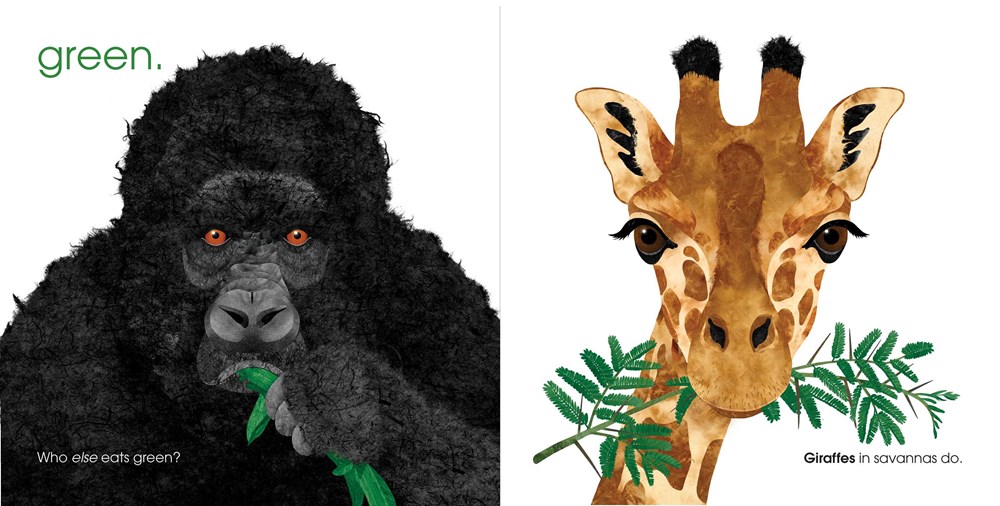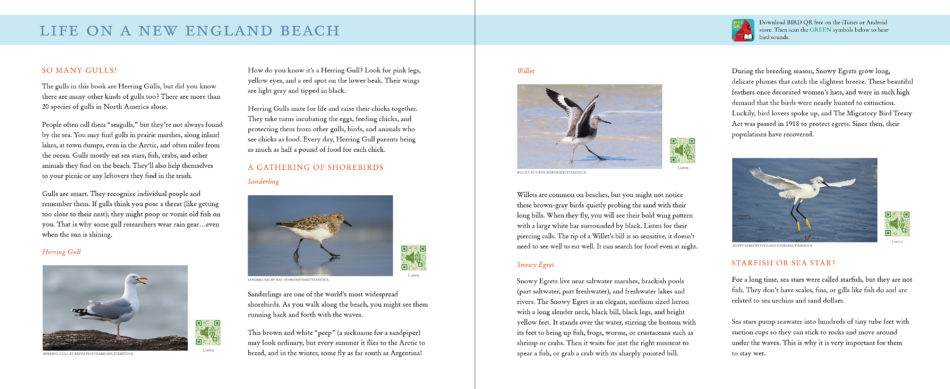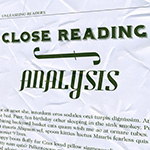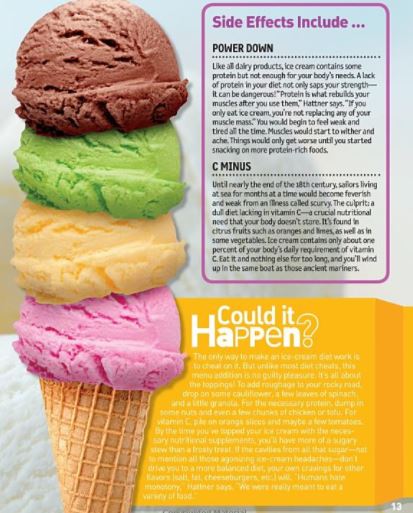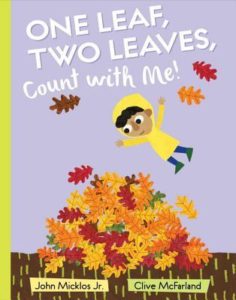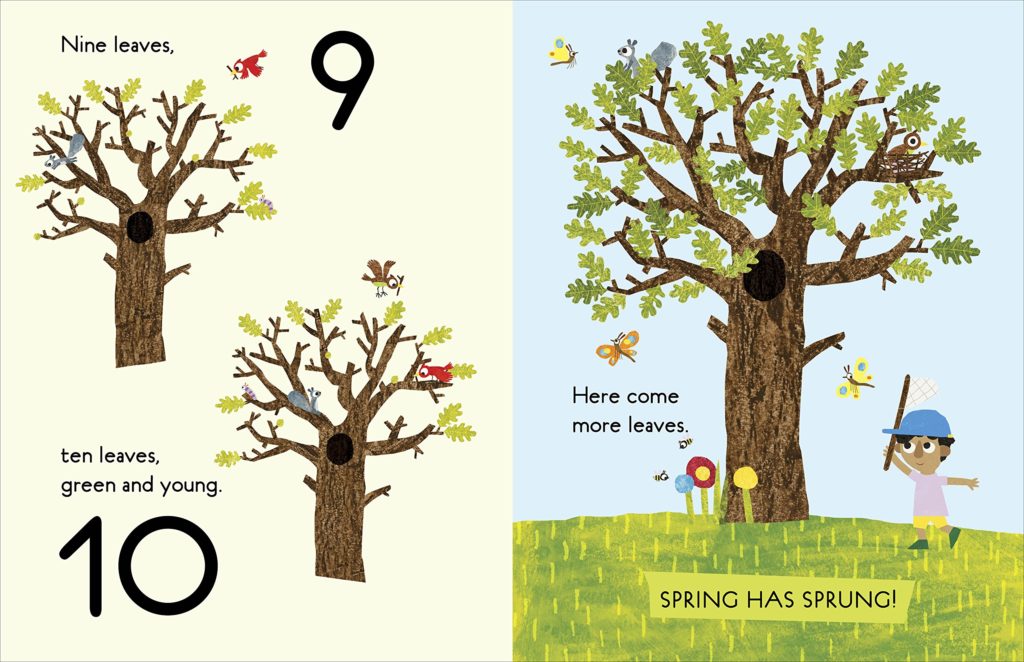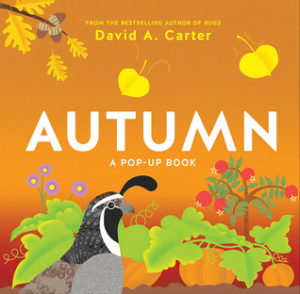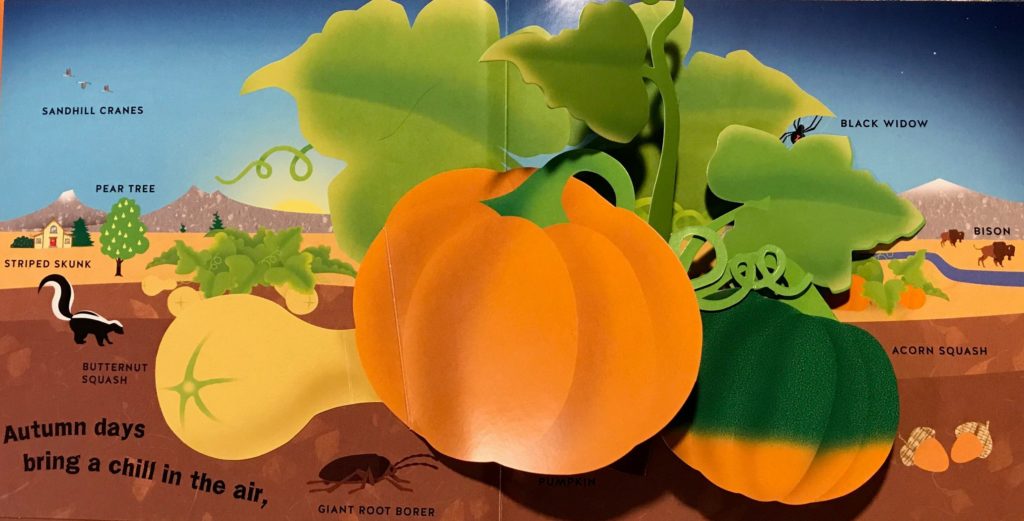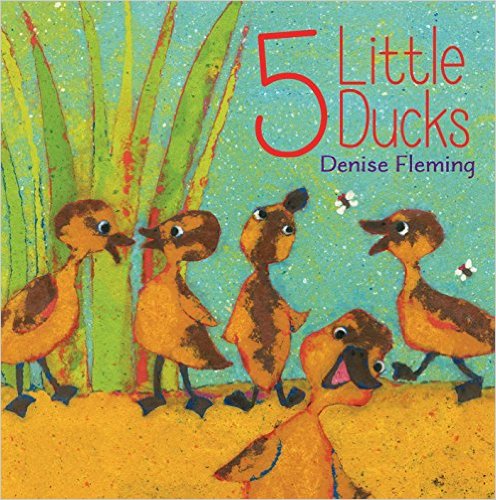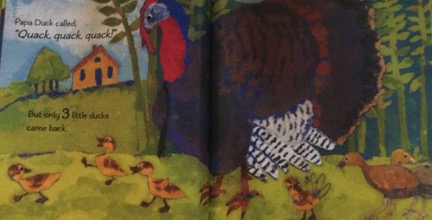
Who Eats Orange?
Author: Dianne White; Illustrator: Robin Page
Published August 14, 2018 by Beach Lane Books
Goodreads Summary: Who eats orange—a chicken? A bunny? A bear? Find out in this unique exploration of colors and animals’ favorite foods.
Animals eat a rainbow of different foods. Gorillas in the mountains eat green, octopi in the ocean eat red, and toucans in the canopy eat purple. Young animal enthusiasts will love digging into this lively journey around the world to explore the colorful diets of many animals, from the familiar to the exotic.
Review and Teacher’s Tools for Navigation: These is a clever book! It teaches about animals, colors, and foods simultaneously. Each page offers a lead into the next page which makes it a great read-aloud. When I read this with my son, I loved pausing on each page and asking him to make predictions. There are also great opportunities for teaching complex vocabulary through this text. The animals the author selected aren’t the typical animals we see in picture books and board books, which caused my son to ask a lot of questions. It made reading the book all the more interesting. We spent some time, for example, looking up quetzals on the internet and exploring the food and habitats of this interesting bird. I found this book to be very inspiring. It made me want to write, write, write! It would be a great resource for teachers to have in their classrooms.
On a more personal note, this book is a great resource for me as a mom. It offered space for my kids and me to discuss the different colors of the foods that he enjoys and how he might try to eat more colors. Who Eats Orange? offers so much for caregivers seeking to diversify their children’s diets.
Also, isn’t the cover amazing? My toddler giggled when I pulled it out of my bag.
Check out fun activities for the book here.
Discussion Questions: Which color foods are your favorite to eat? How might you incorporate more colors into your diet?; Which animals were missing from the book? Can you think of one more animal for each color?; How do the illustrations add to your appreciation of the text? What did you learn from the backmatter?
Check Out a Few Spreads from the book!:
Read This If You Loved: Dragons Love Tacos by Adam Rubin; Green by Laura Vaccaro Seeger
Giveaway!:
Recommended For:
About the Author and Illustrator:
Dianne White has written several picture books, including the celebrated Blue on Blue, illustrated by Beth Krommes. This summer she also released Goodbye Brings Hello: A Book of Firsts, illustrated by Daniel Wiseman. She lives in Gilbert, Arizona, with her family. For more information, and to download a free activity kit, visit diannewrites.com.
Twitter @diannewrites
Robin Page has written and illustrated several picture books, including the 2003 Caldecott Honor recipient What Do You Do with a Tail Like This?, which she created with her husband Steve Jenkins, and A Chicken Followed Me Home! and Seeds Move!, which she both wrote and illustrated. Robin and Steve live in Boulder, Colorado.
*Thank you for Barbara from Blue Slip Media for sending along this wonderful book!*
